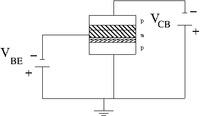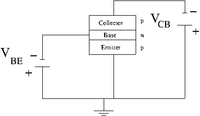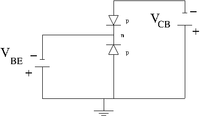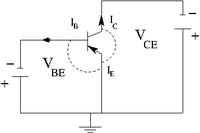Difference between revisions of "TF EIM Chapt6"
Jump to navigation
Jump to search
(→JFET) |
|||
| Line 12: | Line 12: | ||
JFET <math>\equiv</math> Junction Field Effect Transistor | JFET <math>\equiv</math> Junction Field Effect Transistor | ||
| + | |||
| + | |||
| + | |||
| + | {| border="3" cellpadding="20" cellspacing="0" | ||
| + | |- | ||
| + | | The n-p junction. The depletion region is represented as the shaded square. Notice the depletion region (and E-field in that region) is larger than the forward biased n-p juntion || the potential | ||
| + | |- | ||
| + | |[[File:TF_EIM_BipolarJunction.png| 200 px]][[File:TF_EIM_pnpBipTran.png| 200 px]] [[File:TF_EIM_BipolarJunctionDiodeRep.png| 200 px]] [[File:TF_EIM_BipolarJunctionCircuit.png| 200 px]] || | ||
| + | |- | ||
| + | | The n-p junction. The depletion region is represented as the shaded square. Notice the depletion region (and E-field in that region) is larger than the forward biased n-p juntion || the potential | ||
| + | |- | ||
| + | |} | ||
=MOSFET= | =MOSFET= | ||
Revision as of 03:49, 4 April 2011
Field Effect Transistors (FET, JFET, MOSFET)
Properties
FETs differ from the bipolar transistors in the las chapter in that the current from a FET is only due to the majority charge carriers in the semiconductor while bi-polar transistors current is produced from both carrier types; electron and hole.
- higher input impedance than bi-polar
- less gain than bi-polar
JFET
JFET Junction Field Effect Transistor
MOSFET
MOSFET Metal-Oxide-Semiconductor Field Effect Transistor



